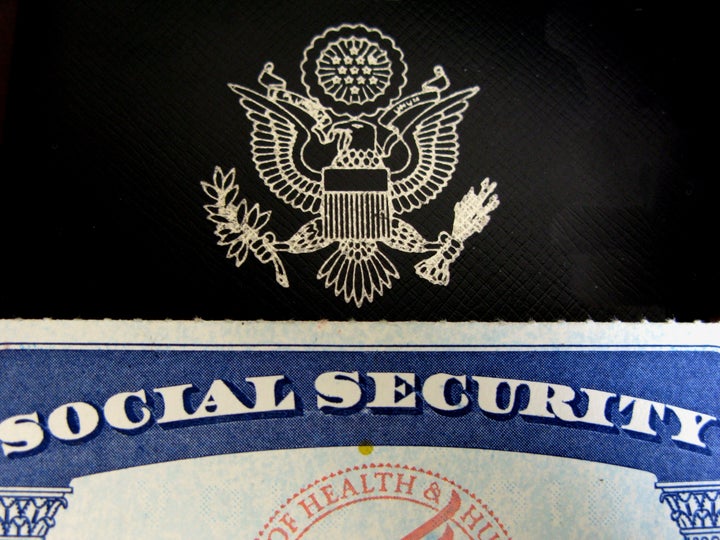
On the occasion of the Social Security Act being signed into law by President Franklin D. Roosevelt 80 years ago, we thought we'd highlight some of the crazier things about the nation's retirement safety net -- and who better to point out the cray-cray than one of the system's most vocal critics?
1. "Social Security is a bureaucrat's joy ride." -- Harvard professor Laurence Kotlikoff.
Put more precisely: Social Security is tremendously confusing. It has 2,728 rules and each of those rules has sub-rules and exceptions. Making things worse, you will often get conflicting or outright wrong information when you attempt to seek clarity, says Laurence Kotlikoff, Boston University economist and co-author of the the New York Times best-seller, "Get What's Yours -- the Secrets to Maxing Out On Your Social Security Benefits." He also is the developer of a $40 software program called MaximizeMySocialSecurity, designed to tell you how to get the most from the system.
Kotlikoff, who minces no words, calls Social Security "a bureaucrat's joy ride." He says it's "undecipherable," "a disgrace," and in an interview with Huff/Post50 said that the system is "the perhaps the most complicated institution ever devised by man throughout history on the planet." This said, Kotlikoff is an ardent supporter of forcing people to save and insure. So he loves Social Security's objectives, but hates its execution.
"Nobody can remotely understand it," Kotlikoff said. "Social Security is an incredibly complex maze of entangled provisions, most of which were put into place in piecemeal fashion over the years."
With little question, most of its users are indeed pretty clueless about how to maximize their Social Security benefits. Only 28 percent of those who took the MassMutual Life Insurance Company true/false test on basic Social Security retirement benefits last June had a passing grade. That's right: 72 percent flunked. You can take the quiz here.
2. "Social Security was designed sexist and has some provisions only a misogynist could love." -- Kotlikoff.
"Social Security rules were mostly written in the 1950s, ’60s and ’70s when women were supposed to 'know their place,'" said Kotlikoff. "Namely stay at home, clean the house, make supper, bring up the kids, remain monogamous, and, in the case of divorce, don’t remarry." Even today, remarrying will knock an ex off the spousal benefits train immediately (unless they are 60 or older).
It wasn't until the late 1970s when Ruth Bader Ginsburg argued a series of Supreme Court decisions to make Social Security gender neutral -- at least in its language. So now we have something known as spousal benefits and men are eligible for it if their wives earn more than they do. (And the spousal benefit check is written to and sent to the person who claims the benefit.)
But while the language may have changed, Social Security has a host of provisions that may be perceived as sexist given that women continue to earn less than men. For example, many low-earning spouses don't get a penny more in benefits despite paying 12.4 percent of their wages in FICA taxes on every job they ever held. This greatly reduces their incentive to work in the first place, Kotlioff says.
Kotlikoff believes there are many other provisions -- like needing to stay married for 10 years in order to collect divorcee benefits -- that are still trying to keep women "in their place."
For example, a remarried spouse can provide their new spouse with spousal benefits after being married for only one year. And they can collect their new spouse's widow(er) benefits after just nine months. Guess who is more likely to remarry, the husband or the wife? According to U.S. Census data, divorced men have always outpaced women in remarrying.
3. Social Security may "discriminate against the disabled" as well. -- Kotlikoff.
Kotlikoff calls it the Christmas Eve Robbery because this rule tweak occurred on Dec. 23. But first, some background: Social Security disability benefits automatically convert to retirement benefits at full retirement age. But before Dec. 23rd, you could "withdraw" (stop) this conversion, which would then let you collect a full spousal benefit on your current or ex-spouse (assuming you were married a decade or more) while letting your own retirement benefits grow at 8 percent per year and then taking them at age 70 when they would be 32 percent higher.
"This right was clear as day until the bureaucrats struck, in the dead of night, when no one was looking," says Kotlikoff. Thanks to their rewriting of a few lines of their rules, none of the millions of American workers who are disabled can collect what all non-disabled workers can potentially receive, namely a full spousal benefit. Yes, they can collect an "excess" spousal benefit, but this is generally very small or nothing at all.
So what exactly did Social Security officials do, with no public debate, no new legislation from Congress, and no public disclosure as many Americans were preparing for Christmas? They rewrote a provision of their Program Operating Manual System (POMS) to require all disabled workers to file for their retirement benefits upon reaching full retirement age. They left disabled workers just one option to collect full spousal benefits: Namely, paying back every penny is disability benefits they ever received.
Kotlikoff sees this as "extreme discrimination" against the disabled and hopes someone will file a class action suit on their behalf.
4. Social Security is full of 'gotcha' moments.
Truly a case of how what you don't know can hurt you, Social Security doesn't hand-hold. Despite the many studies that point to its users' lack of understanding, its website often requires assumed prerequisite knowledge, and because there are so many rules, even the simplest question has a convoluted answer. Here's a link to the page for "what do I need to know before I apply." It is link upon link upon link.
One of the bigger Social Security "gotcha" moments is how it intersects with Medicare. If you are still working past retirement age -- as many are these days -- and are therefore covered by your employer's health plan, you need to pay attention. Filing for Social Security at 65 or older automatically enrolls you in Medicare Part A -- the part that covers hospital stays and is provided for free assuming you worked for 10 years. It also unfortunately disallows you to participate in an HSA provided by your employer’s health plan, which could have helped you shelter a few bucks.
Of course at the end of the day, Social Security may be the only safe way to protect us against the worst risk we face: That risk isn't dying, but rather living in old age, says Kotlikoff, who has his own plan for replacing Social Security that can be found here.
What do YOU think? Let us know in comments.
Also on Huff/Post:

